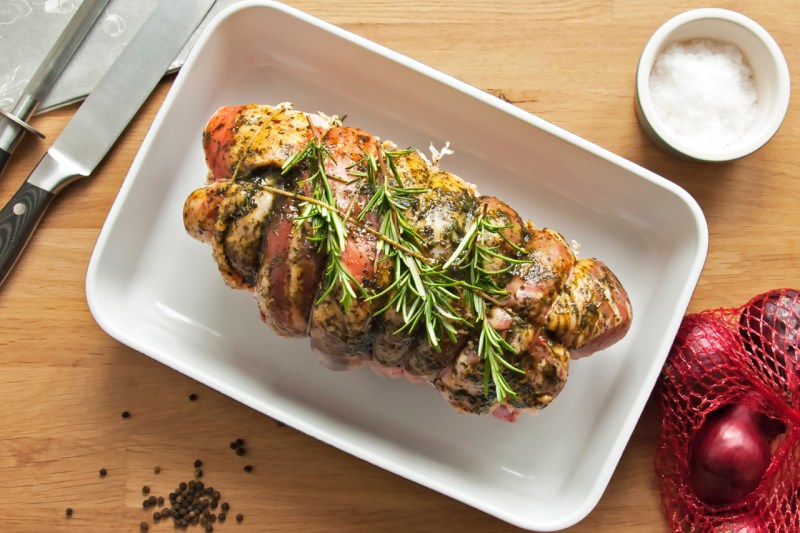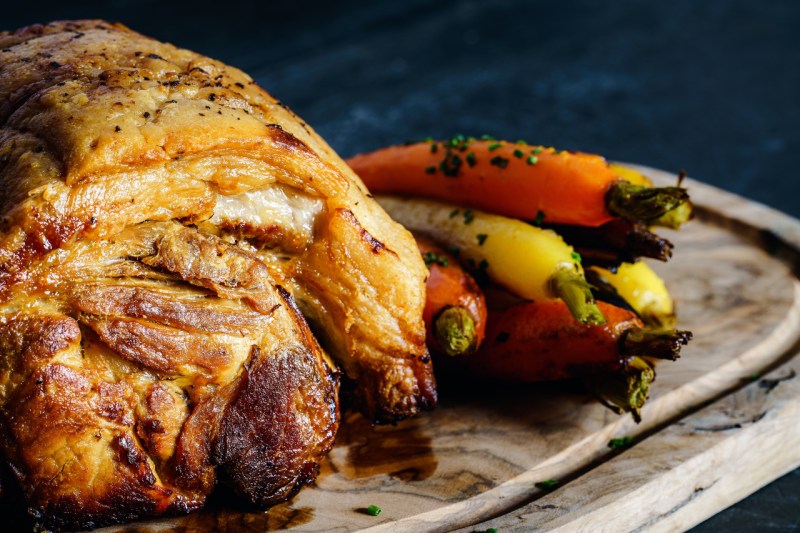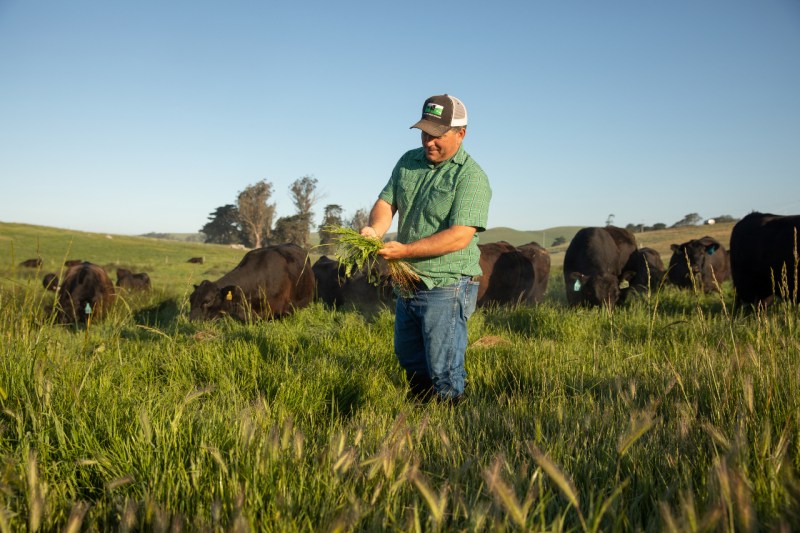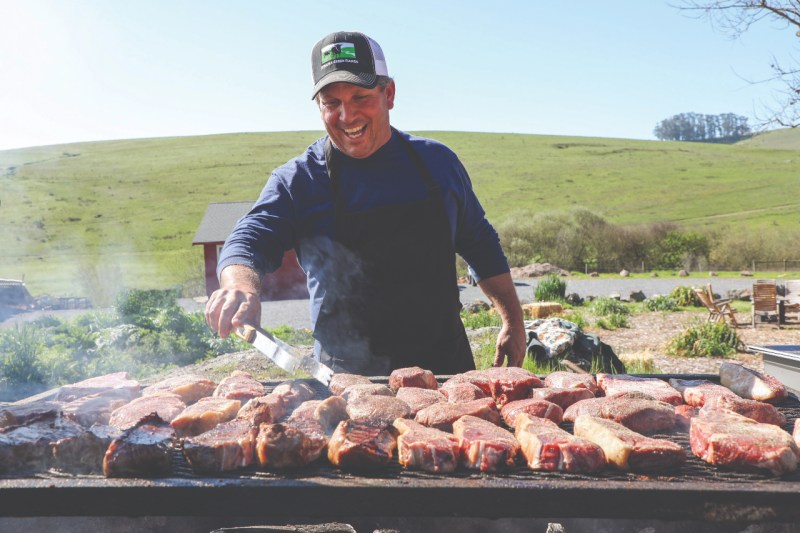
One of the best and most show-stopping ways to cook meat is the whole roast. From braising to oven roasting, cooking a large cut is both incredibly satisfying and delicious, perfect for a weekend dinner or holiday celebration. To tackle such a recipe, the first step is to source a high-quality product. One of the best places to source meat is from Stemple Creek in Marin County, California. Run by fourth-generation farmer Loren Ponica and his wife Lisa, Stemple Creek is a family farm that’s passionate about high-quality meat. Their quality is second to none with a customer base ranging from Michelin-starred restaurants to the home cooks looking for more sustainable meat options. The best part? Stemple Creek products are available for nationwide shipping.
What makes Stemple Creek meat so special? Besides their animals being grass-fed and grass-finished on organic pastures, Stemple Creek is also deeply involved in The Marin Carbon Project, focusing on regenerative agriculture practices that combat the effects of global warming. While Stemple Creek offers a large variety of steaks and chops, some of their best options are their stellar large roasts. The proper cooking of a whole roast requires some different tips and techniques compared to a smaller steak or chop. To assist, Stemple Creek is here to provide their insights and tips into how to make your next roast dinner the best ever.
The Different Types of Roasts

At Stemple Creek, there’s a large variety of potential cuts to choose from. For the three most common animals used for roasts — beef, lamb, and pork — the butchering of these animals is generally broken down in a similar fashion. This is due to the fact that they are four-legged mammals with mostly similar body structures. The main difference will be size (beef being the largest while lamb is the smallest) meaning that each part of the animal will yield different sizes and meat ratios. For instance, both beef and pork tenderloin roasts are common cuts while the lamb tenderloin is not. This is because a lamb tenderloin is too small to be suitable. Instead, the lamb tenderloin is butchered into the loin chop, the same cut as the porterhouse or T-bone for beef.
For the best centerpiece beef roasts, Stemple Creek recommends either prime rib, top sirloin, or New York roasts. Although less marbled, cuts like top round or eye of round are also great if the plan is to roast and slice thin. By slicing these lean roasts thinly, it ensures peak tenderness and texture. For lamb, Stemple Creek prefers the shoulder or leg. But for those looking for something smaller, they recommend the sirloin. As for pork, they like the sirloin and loin roasts. A great aspect of pork is that the skin is also delicious. To achieve succulent meat with crispy pork crackling, ask your butcher to leave the skin intact for a whole pork loin roast.
What is Grass-Fed Meat?

All of the lamb and beef at Stemple Creek are grass-fed on organic pastures. What does this mean for flavor? It all comes down to the fat. “Specifically, the fat has a different flavor — it has more complexity because the diet is not the same every single day. The grass in the pasture has different stages and so there is some seasonality to it,” said Stemple Creek. When compared to conventionally farmed meat, the taste of grass-fed meat is more pronounced (especially in beef), featuring a unique, gamey flavor.
When it comes to pork, pasture-raised is supreme. Pigs are natural foragers and when raised organically, these animals will consume a lot of natural foods like acorns and fruit, giving organic pork a deep, richer flavor than the bland white meat of factory-farmed pigs.
Cooking Tips on Seasoning and Temperature Control

When it comes to cooking roasts, Stemple Creek are fans of keeping it simple. Some of their favorite additions include fresh garlic, salt, and pepper. For lamb, they love the addition of fresh rosemary, an herb that perfectly complements the grassy flavor of good lamb.
One of the most important elements of cooking a large cut of meat is managing temperatures. Stemple Creek prefers their meat cooked to medium-rare, a temperature that’s much easier to ensure on a steak versus a larger roast. The key is to invest in a good-quality meat thermometer and avoid simply checking the doneness of the roast with your fingers. For medium-rare, cook the meat to 130 degrees Fahrenheit, take it off the heat and let it rest. As it rests, the meat will continue to cook, reaching about 140 degrees. In Stemple Creek’s opinion, it’s better to undercook rather than overcook because you can always bring the meat up to temperature. For a straightforward guide on achieving that great roast cookery, Stemple Creek follows these simple directions:
- Reverse sear for a beef roast.
- Preheat the oven or your grill to 250 degrees.
- Put the roast in and check the temperature every 20 minutes until it gets to about 120 degrees.
- When it gets to 120 degrees, crank up the heat to 500 degrees for about 5 minutes – until there is a bubbly brown sear on the outside.
- Take it out, let it rest for 5-10 minutes. Slice it up and serve.
A great thing about roasts is that once you’re done with your initial meal, there’s often plenty leftover for other recipes. Stemple Creek likes to chop up their leftover beef and pork roasts with veggies alongside eggs as a breakfast hash. You can also slice your roasts and add them to dishes like noodle soups (ramen for example) and sandwiches.



